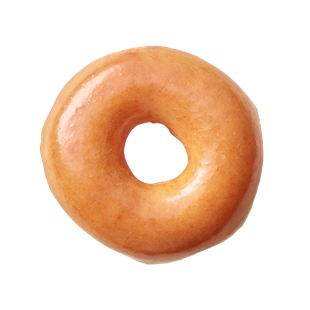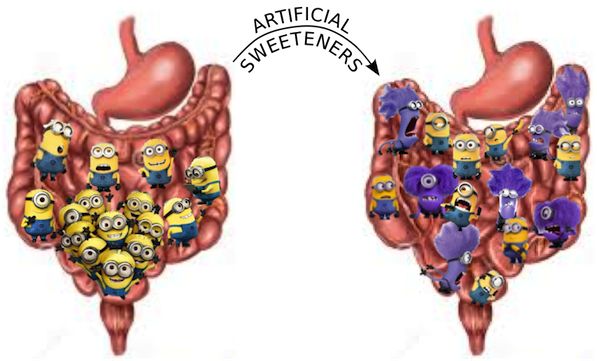The ins and outs of sugar
By: Dana McNaught, Contributing Writer
If you were to perform an internet search on what kind of impact sugar has on human health, you would find answers that range from ‘sugar is absolutely safe’ to ‘sugar is more addictive than cocaine’. Somewhere in the middle of these extremes lies the truth. For our intents and purposes, we will define sugar simply as refined carbohydrates. Some examples of sugar include cane sugar, maple syrup, raw sugar (turbinado, sucanat), honey, corn syrup, and agave nectar. Along with protein and fat, carbohydrates are a source of nutrients and energy (calories). Within the body, the form of sugar that is used for energy is glucose, and it is the brain’s preferred fuel source.

When we look at whole food sources of carbohydrates, even the sweetest options- fruits- have sugar packaged along with fiber. Since fiber slows the digestion of carbohydrates into simple sugars, it also slows the release of those sugars into the bloodstream. If you’re wondering where the idea of sugar being as addictive as cocaine could have originated from, it’s from brain scans that show sugar lighting up the reward centers of the brain, just as some illicit drugs do. However, when you consider the fact that the brain prefers glucose as an energy source, it makes sense that the brain receiving glucose would light up the reward centers, because your brain wants you to repeat the behavior that got it the fuel it needs to run on. However, not all sugar is created equally, and in nature, you could never access the amount of refined sugar being consumed by the average American each year- about 152 pounds! If you’re thinking that this sounds impossible- just consider the fact that Campbell’s tomato & sweet basil soup has 43 grams of sugar per serving, while a Krispy Kreme original glazed doughnut has 10 grams.

For most people, sweeteners can be tolerated in small amounts, and you may want to consider choosing sweeteners with minimal processing (such as raw sugar, coconut sugar, maple syrup, and raw honey) wherever possible, as they may still contain some nutrients. The important thing to keep in mind is that you want to choose whole food sources of carbohydrates as a source of energy. Sometimes, artificial sweeteners are preferred by consumers because they lack calories and do not impact blood glucose levels the way that traditional sweeteners do. However, many artificial sweeteners contain chemicals that alter the population of our gut bacteria. Since our beneficial bacteria plays such an important role in weight management, this alteration has the opposite effect of what is intended by consuming zero-calorie sweeteners and actually leads to weight gain.
You probably have heard of the dangers of consuming high-fructose corn syrup. The issue is the unusually high amount of isolated fructose (‘high fructose’) that the body is unable to utilize. This ends up being stored as fat in the liver, and has even been linked to the development of Non-Alcoholic Fatty Liver Disease. The average fructose content in high-fructose corn syrup (HFCS) is 55%, but what’s often looked over is the fact that the fructose content of agave nectar is just as high. Fructose does not disturb blood sugar levels, so agave nectar can be marketed as a low-glycemic sweetener- meaning that it does not raise your blood sugar levels as much as table sugar. Being marketed as a low-glycemic sweetener automatically made space for agave nectar as a ‘healthy’ option, when it may end up being just as bad for us as HFCS. Stevia and Monk fruit are two non-caloric sweeteners derived from plants that do not impact your blood glucose levels and so far appear to not have adverse health effects, but always do your own research and pay attention to how your food choices make you feel.
If you were to perform an internet search on what kind of impact sugar has on human health, you would find answers that range from ‘sugar is absolutely safe’ to ‘sugar is more addictive than cocaine’. Somewhere in the middle of these extremes lies the truth. For our intents and purposes, we will define sugar simply as refined carbohydrates. Some examples of sugar include cane sugar, maple syrup, raw sugar (turbinado, sucanat), honey, corn syrup, and agave nectar. Along with protein and fat, carbohydrates are a source of nutrients and energy (calories). Within the body, the form of sugar that is used for energy is glucose, and it is the brain’s preferred fuel source.
When we look at whole food sources of carbohydrates, even the sweetest options- fruits- have sugar packaged along with fiber. Since fiber slows the digestion of carbohydrates into simple sugars, it also slows the release of those sugars into the bloodstream. If you’re wondering where the idea of sugar being as addictive as cocaine could have originated from, it’s from brain scans that show sugar lighting up the reward centers of the brain, just as some illicit drugs do. However, when you consider the fact that the brain prefers glucose as an energy source, it makes sense that the brain receiving glucose would light up the reward centers, because your brain wants you to repeat the behavior that got it the fuel it needs to run on. However, not all sugar is created equally, and in nature, you could never access the amount of refined sugar being consumed by the average American each year- about 152 pounds! If you’re thinking that this sounds impossible- just consider the fact that Campbell’s tomato & sweet basil soup has 43 grams of sugar per serving, while a Krispy Kreme original glazed doughnut has 10 grams.
For most people, sweeteners can be tolerated in small amounts, and you may want to consider choosing sweeteners with minimal processing (such as raw sugar, coconut sugar, maple syrup, and raw honey) wherever possible, as they may still contain some nutrients. The important thing to keep in mind is that you want to choose whole food sources of carbohydrates as a source of energy. Sometimes, artificial sweeteners are preferred by consumers because they lack calories and do not impact blood glucose levels the way that traditional sweeteners do. However, many artificial sweeteners contain chemicals that alter the population of our gut bacteria. Since our beneficial bacteria plays such an important role in weight management, this alteration has the opposite effect of what is intended by consuming zero-calorie sweeteners and actually leads to weight gain.
You probably have heard of the dangers of consuming high-fructose corn syrup. The issue is the unusually high amount of isolated fructose (‘high fructose’) that the body is unable to utilize. This ends up being stored as fat in the liver, and has even been linked to the development of Non-Alcoholic Fatty Liver Disease. The average fructose content in high-fructose corn syrup (HFCS) is 55%, but what’s often looked over is the fact that the fructose content of agave nectar is just as high. Fructose does not disturb blood sugar levels, so agave nectar can be marketed as a low-glycemic sweetener- meaning that it does not raise your blood sugar levels as much as table sugar. Being marketed as a low-glycemic sweetener automatically made space for agave nectar as a ‘healthy’ option, when it may end up being just as bad for us as HFCS. Stevia and Monk fruit are two non-caloric sweeteners derived from plants that do not impact your blood glucose levels and so far appear to not have adverse health effects, but always do your own research and pay attention to how your food choices make you feel.
You have the right to make informed decisions about how much or how little sugar you want in your diet. A few great options to keep in mind are:
- Always check the nutrition label: There are no regulated definitions for ‘healthy’ or ‘natural’ in food production, so be sure to look past marketing tactics.
- Stick to whole foods: When it comes to carbohydrates, your best option is to stick to whole food sources, like: whole grains (oats, brown rice, quinoa, millet) sprouted or whole grain breads and pastas, whole fruit, starchy vegetables (squash, sweet & white potatoes). This way, you get the carbohydrates, nutrients, fiber, phytochemicals, antioxidants, etc. that we could never replicate in food processing.
- Eliminate sugary beverages: When we consume foods and beverages that have calories and flavorings but little-to-no nutritional value, our bodies recognize the lack of nutrients and increase our hunger in order to get the required nutrients for promoting life and well being.
Sage Integrative Health Center hosts a variety of workshops and activities, and you are welcome to attend, participate and ask your burning nutrition questions!
Basaranoglu, M., Basaranoglu, G., & Bugianesi, E. (2015). Carbohydrate intake and nonalcoholic fatty liver disease: fructose as a weapon of mass destruction. Hepatobiliary Surgery and Nutrition, 4(2), 109–116. http://doi.org/10.3978/j.issn.2304-3881.2014.11.05
(2018). Tomato & sweet basil bisque [digital image]. Retrieved from:
(2018). Original glazed doughnut [digital image]. Retrieved from:
(2014, November 14). Minions microbes [digital image]. Retrieved from: https://blogs.scientificamerican.com/guest-blog/artificial-sweeteners-may-have-despicable-impacts-on-gut-microbes/
(2018). Understanding carbohydrates, fiber and sugar [digital image]. Retrieved from:


Comments
Post a Comment